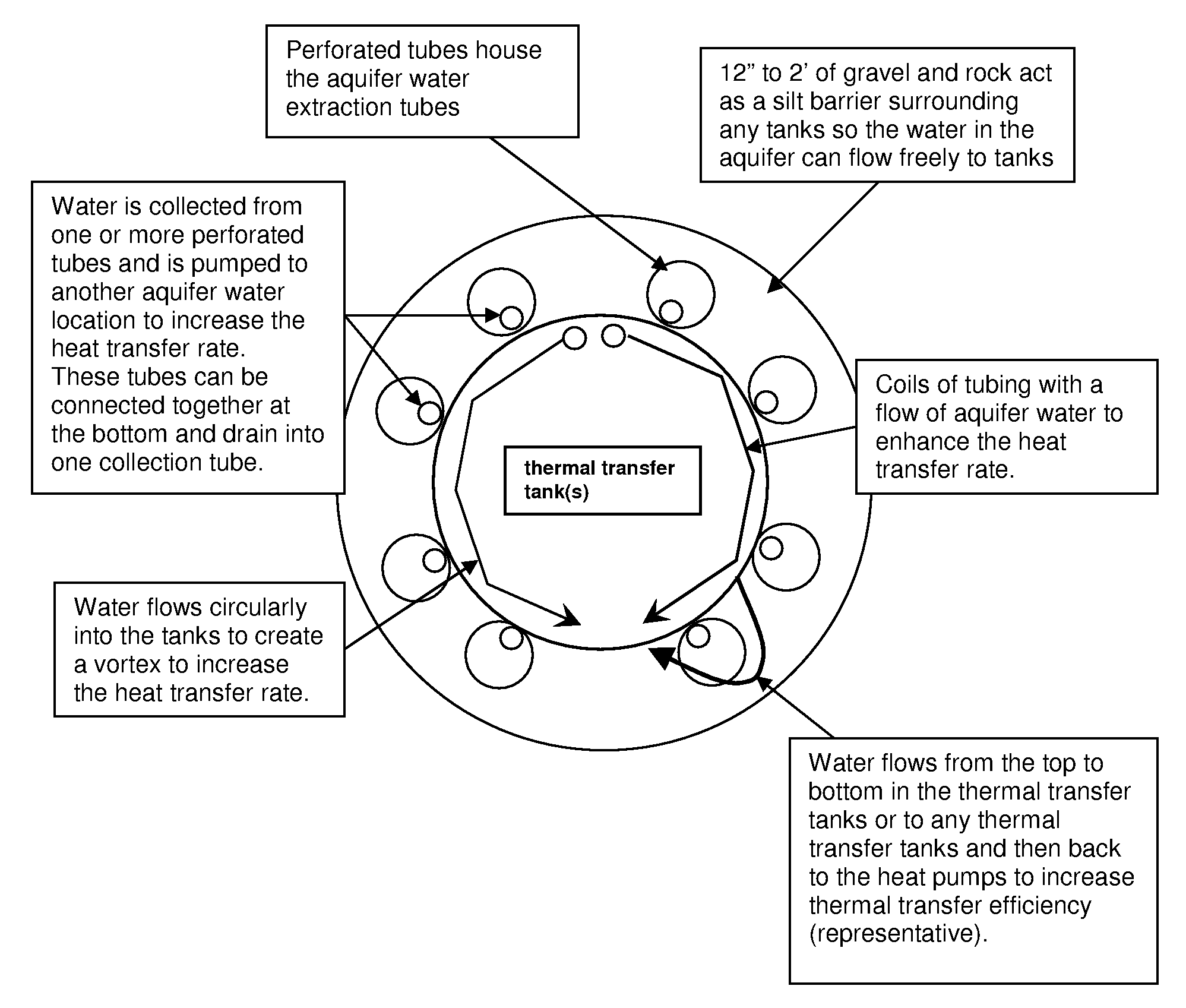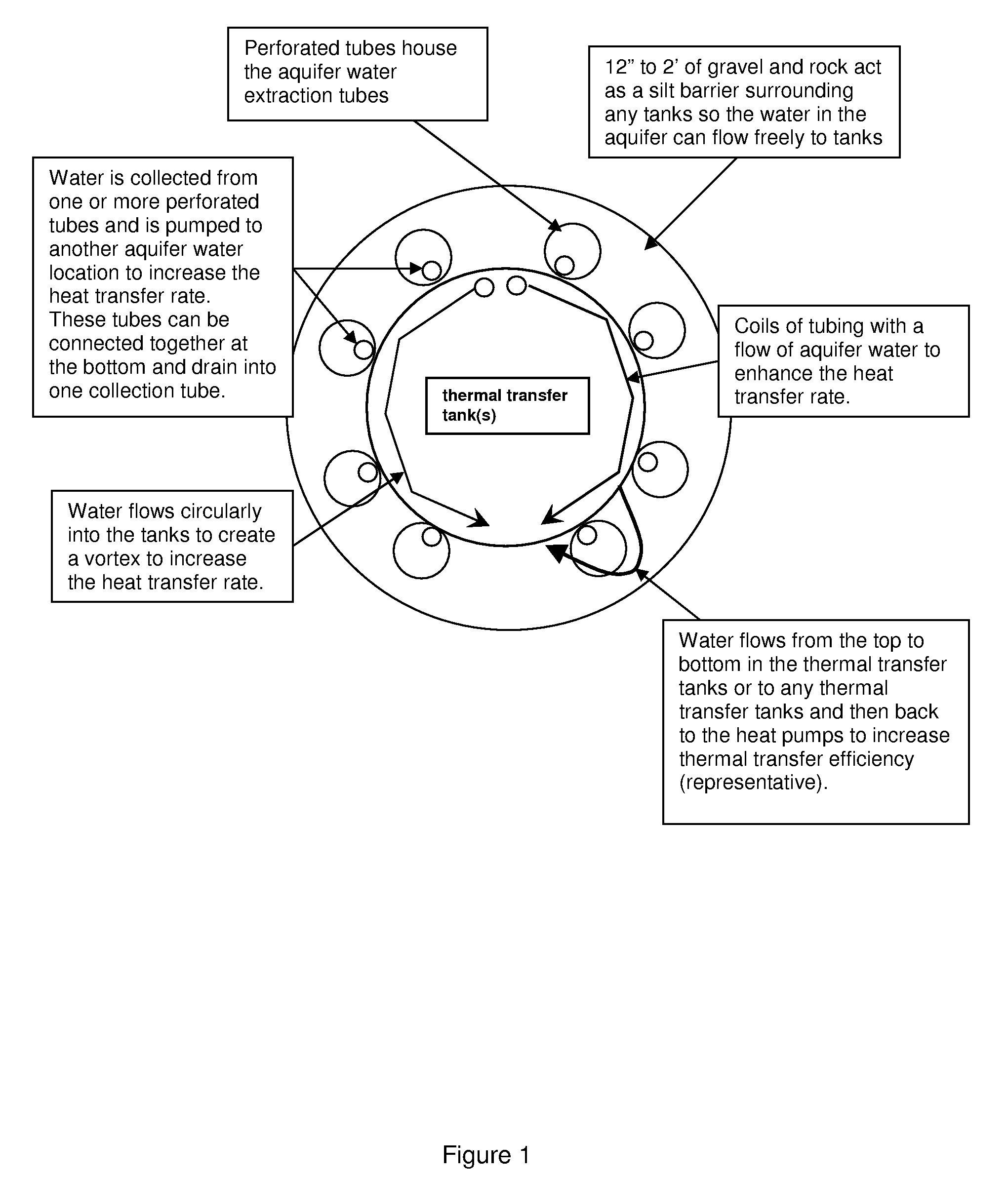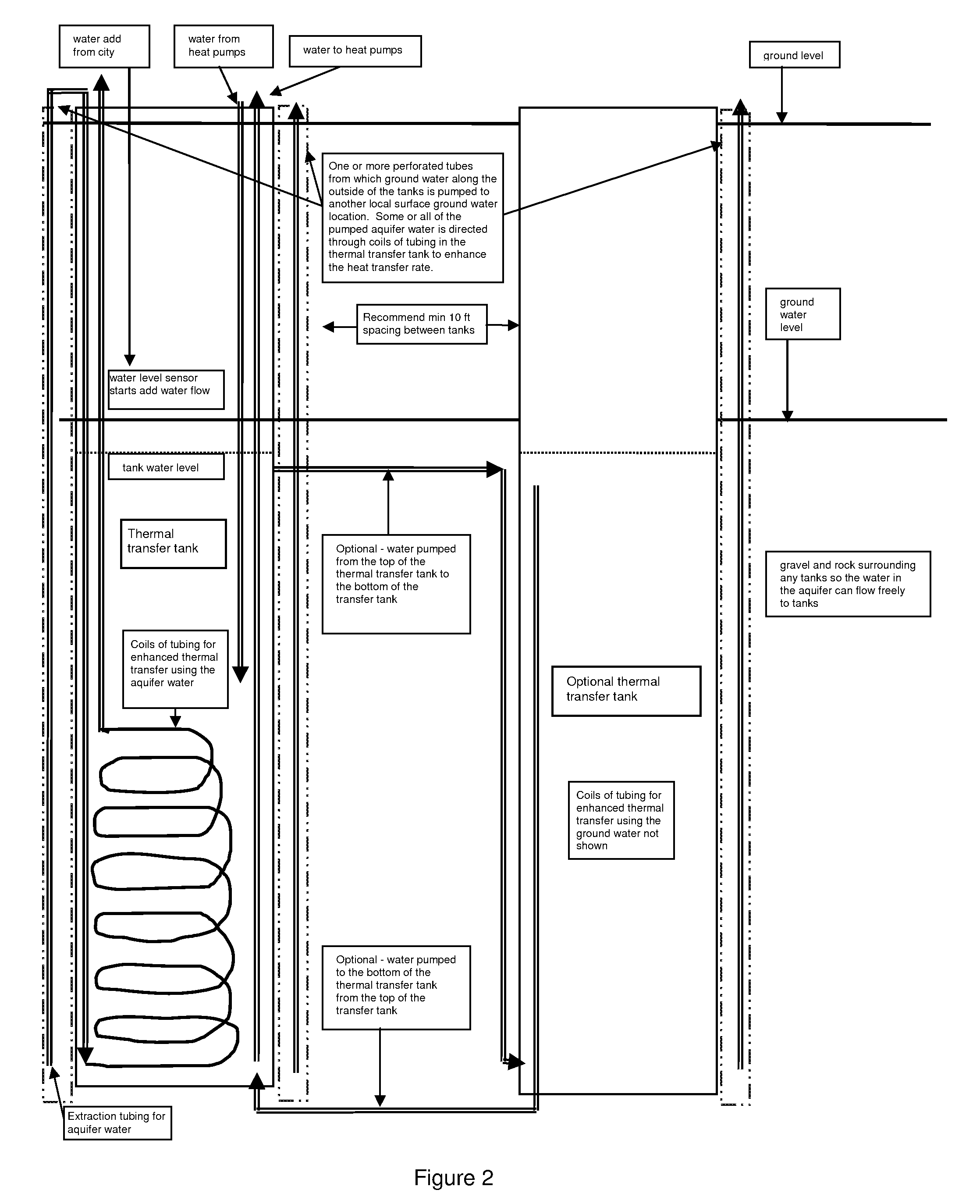Fluid Vortex Energy Transfer System
a technology of energy transfer system and fluid vortex, which is applied in the direction of geothermal energy generation, lighting and heating apparatus, and collectors with underground water as fluid, can solve the problems of expensive and slow installation, and achieve the effects of increasing the amount of heating/cooling, and speeding up the pump
- Summary
- Abstract
- Description
- Claims
- Application Information
AI Technical Summary
Benefits of technology
Problems solved by technology
Method used
Image
Examples
example
Heat Transfer in a Heat Exchange
[0065]A single plate exchanger with media A transfers heat to media B. The wall thickness is 0.1 mm and the material is polypropylene PP, aluminum or stainless steel. Media A and B are air with a convection heat transfer coefficient of hair=50 W / m2K. The overall heat transfer coefficient U per unit area can be expressed as:
U=1 / (1 / hA+dxw / k+1 / hB) (1b)
[0066]Using the values from above the overall heat transfer coefficient can be calculated to:[0067]Polypropylene PP: U=24.5 W / m2K[0068]Steel: U=25.0 W / m2K[0069]Aluminum: U=25.0 W / m2K
[0070]Cooling Mode and Heat Flux
[0071]Heat flux for various cooling modes
[0072]The table below can be used to indicate the maximum heat flux for various cooling modes.
Heat FluxCooling Mode(kW / m2)Free Convection Air0.5Forced Convection Air5Free Convection Immersion10Forced Convection Immersion500Forced Convection Boiling1000Impingement Air10Jet Immersion, single phase400Jet Immersion, boiling900[0073]1 Btu / ft2 h=3.1525 W / m2
[00...
PUM
 Login to View More
Login to View More Abstract
Description
Claims
Application Information
 Login to View More
Login to View More - R&D
- Intellectual Property
- Life Sciences
- Materials
- Tech Scout
- Unparalleled Data Quality
- Higher Quality Content
- 60% Fewer Hallucinations
Browse by: Latest US Patents, China's latest patents, Technical Efficacy Thesaurus, Application Domain, Technology Topic, Popular Technical Reports.
© 2025 PatSnap. All rights reserved.Legal|Privacy policy|Modern Slavery Act Transparency Statement|Sitemap|About US| Contact US: help@patsnap.com



